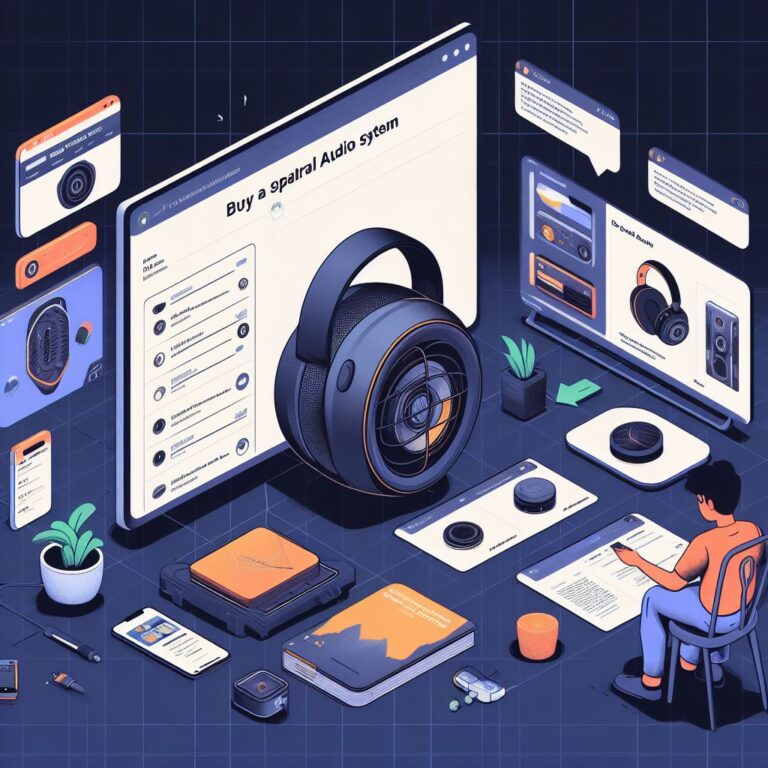How to choose a task manager application
What is a Task Manager?
A task manager is a powerful tool for individuals and teams to effectively manage and track their tasks, projects, and to-do lists. It serves as a central hub where users can create, assign, and organize tasks, set deadlines and prioritize them, and monitor their progress. Task managers are designed to improve productivity and ensure that tasks are completed on time, helping individuals and teams stay organized and focused. With a wide range of task management tools available, users can choose from basic to advanced features and find the right one that best suits their needs. Whether it’s managing individual tasks or complex projects, task managers provide a user-friendly interface that allows for seamless collaboration, efficient task assignment, and the tracking of task status and progress. Additionally, many task managers offer additional features such as customizable templates, task dependencies, mobile apps, and integrations with other tools like Google Calendar and project management software. By using a task manager, individuals and teams can streamline their workflow, improve communication, and achieve their goals more effectively.
Benefits of Using a Task Manager
A task manager is an essential tool for individuals and teams looking to stay organized, prioritize tasks, and facilitate collaboration. Whether you are juggling multiple projects or simply trying to keep track of your own tasks, a task manager application can greatly enhance your productivity and efficiency.
One of the key benefits of using a task manager is its ability to help you stay organized. By creating task lists and setting deadlines, you can ensure that important tasks are not overlooked and stay on track. Additionally, task dependencies and task status updates allow you to plan and manage more complex projects with ease.
Collaboration is another area where task managers excel. With features such as task assignments and real-time updates, team members can easily work together, delegating tasks and sharing progress. Furthermore, task managers often integrate with other tools such as Google Drive, allowing for seamless file sharing and document collaboration.
Accountability is also promoted through task management tools. Assigning tasks to specific individuals ensures that responsibilities are clear and deadlines are met. In addition, these tools allow project managers to track task progress and identify bottlenecks, making it easier to intervene and keep projects on track.
Finally, task managers can automate tedious tasks, freeing up time for more important work. Features such as recurring tasks and customizable templates allow for easy replication of tasks, reducing the effort required to set up repetitive tasks.
In conclusion, using a task manager offers numerous benefits. It enhances organization, increases productivity, facilitates collaboration, promotes accountability, and automates tasks. Whether you are an individual or part of a team, incorporating a task manager into your workflow can greatly improve your efficiency and ensure that important tasks are completed on time.
Assessing Your Needs
Before choosing a task manager application, it’s essential to assess your specific needs and requirements. Consider the size and complexity of your projects, the number of team members involved, and the level of collaboration required. Evaluate whether you need advanced features such as task dependencies, customizable templates, or integration with other tools like Google Drive. Assess the importance of real-time updates and task status tracking for effective project management. Determine if you need features like recurring tasks to automate repetitive tasks and increase productivity. Additionally, consider if mobile accessibility is essential for managing tasks on the go. By understanding your specific needs, you can choose a task manager application that aligns with your goals and enhances your workflow.
Identify Complex Projects
When it comes to project management, not all projects are created equal. Some projects are simple and straightforward, while others are complex and intricate. Identifying complex projects is crucial for large enterprises that need to manage advanced scheduling and allocate resources effectively.
Complex projects typically involve multiple tasks and often require intricate coordination between various teams and departments. As a result, a task management tool with the capability to handle these tasks and resources effectively is essential.
To tackle complex projects, it is important to invest in a robust task management tool that can handle the complexity and scale of the project. These tools often offer advanced scheduling features, allowing project managers to set dependencies between different tasks and ensure that every task is completed on time.
For large enterprises dealing with complex projects, having a task management tool that can support the management of multiple tasks simultaneously is crucial. These tools provide a centralized platform where project managers can assign tasks, track progress, and monitor task dependencies.
In summary, complex projects in large enterprises require an advanced task management tool that can handle multiple tasks, support advanced scheduling, and facilitate effective resource allocation. By investing in the right task management tool, enterprises can navigate the complexities of complex projects and ensure timely project completion.
Understand Key Features to Look For
When choosing a task manager application, it is important to understand the key features that can help streamline your workflow and increase productivity. Here are some key features to look for:
1. Workload Management: A task manager with a workload feature allows you to plan and distribute tasks effectively among your team members. It helps you avoid overloading certain individuals and ensures a balanced workload across the team.
2. Portfolio Management: If you’re handling multiple projects simultaneously, a task manager with a portfolio feature is essential. It provides an overview of all your projects, their progress, and deadlines, allowing you to prioritize and allocate resources accordingly.
3. Gantt Chart: A Gantt chart is a visual representation of project timelines and dependencies. It enables you to easily track task progress, identify bottlenecks, and adjust schedules accordingly. Look for a task manager application that offers a customizable Gantt chart feature.
4. Task Prioritization: Managing tasks effectively requires prioritization. Look for a task manager that allows you to assign priority levels to each task, ensuring that important tasks receive the attention they deserve.
5. Collaboration Tools: Effective collaboration is crucial for successful task management. Look for a task manager that offers collaboration features such as shared calendars, real-time updates, file sharing, and integrated communication tools. These features enable seamless collaboration and communication among team members.
By understanding these key features and choosing a task manager application that suits your specific needs, you can streamline your workflow, improve task management, and increase overall productivity.
Evaluate Advanced Features
When choosing a task manager application, it is important to evaluate the advanced features it offers. These features can greatly enhance your task management experience and ensure efficient project execution. Here are some advanced features to consider:
1. Project Views: A task manager with project views allows you to get a comprehensive overview of each project. You can see all the tasks, deadlines, and milestones associated with a particular project in a visually organized manner. This feature helps in effective project planning and tracking.
2. Subtasks: Managing complex projects becomes easier when you can break down tasks into smaller subtasks. Look for a task manager that supports subtasks, enabling you to create hierarchical task structures. This feature facilitates better task organization and delegation.
3. Client Access: If you work with clients or external stakeholders, consider a task manager that offers client access. This feature allows you to provide limited access to specific projects or tasks to your clients. It fosters transparency, facilitates collaboration with clients, and keeps them updated on project progress.
4. Time Tracking: Accurate time tracking is essential for measuring productivity and managing resources effectively. Look for a task manager that includes time tracking features, such as timers and manual input options. This allows you to track the time spent on each task and project.
5. Two-Factor Authentication: Security should be a top priority when choosing a task manager. Two-factor authentication adds an extra layer of protection to your account by requiring a second verification step, usually through a mobile device or email. This feature helps prevent unauthorized access and safeguards your sensitive project data.
Evaluating these advanced features will ensure that you choose a task manager application that meets your specific needs and enhances your task management capabilities.
Analyze Existing Tools (e.g. Google Drive)
Google Tasks is a task management tool offered by Google that integrates seamlessly with other Google Workspace products. It is a simple and intuitive tool for managing individual tasks and creating task lists. Here are some key features, pros, and cons of Google Tasks:
Features:
1. Integration with Google Workspace: Google Tasks integrates seamlessly with other Google Workspace products, such as Google Calendar and Google Drive. This allows for a more streamlined workflow and easier access to task-related information.
2. Intuitive Scheduling: With Google Tasks, you can easily set due dates and schedule tasks directly from Google Calendar. This makes it convenient to manage your tasks and stay organized.
3. Recurring Reminders: Google Tasks allows you to set recurring reminders for tasks that need to be completed regularly. This is particularly useful for managing repetitive tasks and ensuring they are not overlooked.
Pros:
– Integration with Google Workspace products provides a cohesive workflow and access to relevant information.
– Intuitive scheduling makes it easy to set due dates and manage tasks effectively.
– Recurring reminders help ensure that repetitive tasks are not forgotten.
Cons:
– Limited to a single user: Google Tasks is primarily designed for individual use and may not be suitable for multi-person project teams that require collaboration and task assignment features.
– Lack of advanced features: While Google Tasks is great for basic task management, it may not meet the needs of users looking for more advanced features like task dependencies or customizable templates.
In conclusion, Google Tasks is a convenient and user-friendly task management tool, especially for individuals who utilize other Google Workspace products. However, it may have limitations for larger teams or those requiring more advanced task management features.
Consider Team Size and Structure
When choosing a task manager application, it is important to consider the size and structure of your team. The needs of a small team or solo entrepreneur may differ from those of a larger, more complex, and integrated team.
For solo entrepreneurs or small teams, a task manager application that focuses on individual task management may be sufficient. These users may prioritize features such as intuitive scheduling, basic task lists, and reminders. Tools like Google Tasks can be a good fit, as they offer integration with other Google Workspace products and provide a user-friendly interface.
On the other hand, for larger, more integrated teams, collaboration features become crucial. Task management software with features like task assignment, task dependencies, and customizable templates can greatly enhance team productivity. This allows team members to assign tasks to specific individuals, set task priorities, track task progress, and establish dependencies between tasks. As a result, teams can work together more effectively, ensuring that projects are completed on time and with the necessary coordination.
In summary, considering the team size and structure is essential when choosing a task manager application. Solo entrepreneurs and small teams can benefit from user-friendly and individual-focused tools, while larger and more integrated teams should prioritize collaboration features. By selecting the right task management software, you can ensure that your team stays organized, productive, and on track to achieving their goals.
Choosing the Right Tool for You
When it comes to task management, finding the right tool can make a world of difference in your productivity and efficiency. Whether you’re an individual entrepreneur or part of a larger team, the features and capabilities of a task manager application can greatly impact how effectively you manage and complete your tasks. In this article, we will explore some key factors to consider when choosing a task manager application that suits your specific needs and requirements. By understanding the different features and functionalities available, you can make an informed decision and find the tool that will help you stay organized and achieve your goals. Whether you prioritize individual task management or collaborative team workflows, there’s a task manager application out there for you.
Research Available Tools & Platforms
When it comes to managing tasks effectively, having the right tool can make all the difference. There are several task management tools and platforms available in the market, each offering unique features to streamline your work processes. Here’s a brief overview of three popular options: Asana, Trello, and Monday.com.
Asana is a comprehensive task management tool that enables you to create, assign, and track tasks with ease. It offers a user-friendly interface and supports task dependencies, making it ideal for complex projects. Asana integrates seamlessly with Google Drive and other project management tools, allowing for efficient collaboration among team members.
Trello, on the other hand, provides a visual approach to task management. It lets you create task cards and move them across different lists to track progress. Trello is particularly useful for individual tasks or smaller teams and has a mobile app for on-the-go access.
Monday.com is a versatile task management platform that caters to a wide range of needs. It offers customizable templates for specific project types and allows you to track task progress in real time. With its advanced features like custom fields and calendar views, Monday.com is popular among larger teams and marketing teams.
When selecting a task management tool, consider factors such as the size of your team, the complexity of your projects, and the specific features you require. These three tools – Asana, Trello, and Monday.com – are just a few examples of the many task management options available, so explore different platforms to find the one that suits your needs best.
Compare Feature Lists & Limitations
When comparing task management applications, it is essential to consider their feature lists and any limitations they may have. Here are some of the key features to look for:
1. Project Views: Task management platforms should provide multiple views, such as list, board, or timeline views, to suit different project needs. These views allow you to visualize tasks and their progress, enhancing project management and organization.
2. Subtasks: The ability to create subtasks within tasks is crucial for breaking down complex projects into manageable steps. It helps in establishing task dependencies and ensures tasks are completed in the correct order.
3. Client Access: Task management tools should offer client access features, allowing you to collaborate with external stakeholders seamlessly. This feature enables clients to view project progress, provide feedback, and stay updated on task statuses, fostering transparency and effective communication.
4. Time Tracking: Effective time tracking features enable you to monitor how much time is spent on specific tasks or projects. This helps in identifying productivity bottlenecks, improving project estimation, and allocating resources more efficiently.
5. Two-Factor Authentication: Security is a priority when managing tasks, especially when dealing with confidential information or sensitive projects. Two-factor authentication adds an extra layer of protection by requiring users to provide additional verification beyond passwords, ensuring data security and integrity.
By considering these features, you can evaluate the suitability of task management applications and determine which ones align with your specific needs for effective task management.
Consider Customizable Templates & Mobile Apps
Consider Customizable Templates & Mobile Apps for Enhanced Task Management
One of the key features to look for in a task manager application is the ability to use customizable templates and mobile apps. These features add tremendous value to task management by providing convenience, flexibility, and enhanced productivity.
Customizable templates allow users to easily onboard and customize their task management system based on their specific industry needs. These templates serve as a starting point, providing pre-built structures and workflows that can be tailored to match the requirements of different projects or teams. This eliminates the need to start from scratch and ensures that the task manager is optimized for efficiency right from the beginning.
Mobile apps are another crucial aspect of task management. In today’s fast-paced world, being able to manage tasks on the go is essential. Mobile apps enable users to access their tasks and collaborate with team members from anywhere, at any time. This flexibility boosts productivity by allowing users to stay on top of their tasks even when they are away from their desks.
Popular task manager applications, such as Trello and Asana, offer customizable templates and mobile apps as part of their feature set. These tools provide industry-specific templates that allow users to quickly set up their task management system based on their unique needs. They also offer mobile apps that are user-friendly and intuitive, ensuring a seamless experience for managing tasks on the go.
In conclusion, customizable templates and mobile apps are valuable additions to any task manager application. They streamline onboarding, provide industry-specific customization, and allow for easy task management on mobile devices. By considering these features, you can enhance your productivity and effectively manage your tasks in a way that suits your specific needs.
Test with a Smaller Project or Group
When choosing a task management software, it is important to thoroughly test it before committing to a long-term plan. One effective way to assess the software’s compatibility with your team and operating environment is by starting with a smaller project or group.
By testing the software’s capabilities with a smaller project, you can gauge how intuitive and user-friendly it is. This allows you to identify any potential limitations or challenges early on and determine if the software meets your specific needs. Moreover, starting small gives you the opportunity to understand how the software functions in real day-to-day tasks.
Another crucial step in testing a task management software is to take advantage of trial versions offered by many providers. These trials allow you to experience the software firsthand and evaluate its features and functionalities. By incorporating the trial software into your actual workflow, you can assess whether it seamlessly integrates with your team’s existing processes and enhances productivity.
Additionally, consider conducting a SWOT (Strengths, Weaknesses, Opportunities, and Threats) analysis and A/B testing to further evaluate the software. The SWOT analysis helps identify the software’s advantages, drawbacks, potential benefits, and risks. A/B testing involves comparing two versions of the software or testing different features to determine which one better aligns with your needs and preferences.
In conclusion, testing a task management software by starting with a smaller project or group, utilizing trial versions, and conducting a SWOT analysis and A/B testing can provide valuable insights into its compatibility with your operating environment. This thorough assessment ensures that you choose a task management software that best suits your team’s needs and maximizes productivity.
Setting Up Your Task Manager Application
Setting up your task manager application is an essential step in organizing and efficiently managing your tasks and projects. By following a systematic approach, you can ensure that the software aligns with your needs and maximizes your productivity. This process involves testing the software’s capabilities with smaller projects to evaluate its user-friendliness and identifying any potential limitations or challenges. It also includes taking advantage of trial versions to experience the software firsthand and assess its features and functionalities. Conducting a SWOT analysis and A/B testing can further help you evaluate the software and determine its advantages, drawbacks, and potential benefits. With a well-set task manager application, you can effectively manage your tasks, collaborate with your team, and stay on top of your projects.
Create an Account and Log In
Creating an account and logging in to a task manager application is a straightforward process that allows users to efficiently organize and manage their tasks. When choosing a task manager application, it is important to consider features related to user authorization and security.
To create an account, users typically visit the task manager’s website or download the mobile app and click on the “Sign Up” or “Create Account” button. They are then prompted to provide their email address, create a password, and possibly enter additional personal information.
Once the account is created, users can log in by entering their email address and password on the login page. Some task manager applications may also offer the option of logging in with a social media account or using single sign-on (SSO) if available.
To protect against unauthorized access, users should look for task manager applications that offer robust security features such as user authorization and 2-step authentication. These features provide an extra layer of protection by requiring users to verify their identity through additional methods like a code sent to their email or mobile device.
In addition to security, the task manager application should have a user-friendly interface and intuitive design. This ensures a seamless onboarding experience, allowing users to easily navigate the platform and understand its features without requiring extensive training or tutorials.
Collaboration features and email alerts are also essential for team productivity. Users should look for task manager applications that offer features like task assignment, commenting, file sharing, and real-time collaboration. Email alerts and notifications keep team members updated on task progress, deadlines, and any changes to the project.
By considering these factors during the selection process, users can find a task manager application that not only provides user authorization and security but also offers a user-friendly interface and collaboration features that enhance team productivity.





